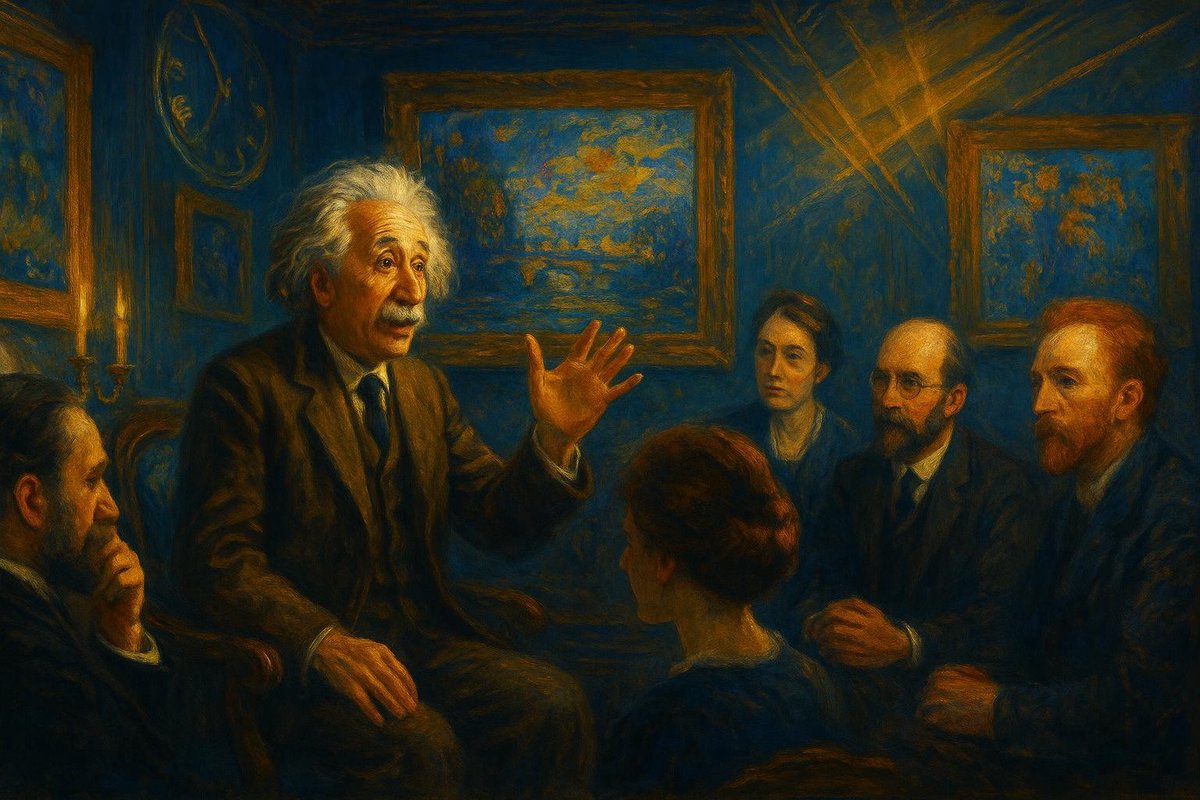
A World Stuck in Time
Imagine looking at a clock and realizing that while it ticks away regularly for you, somewhere else, it’s either rushing forward or dragging slowly. This is the strange, yet fascinating, world that Einstein envisioned with his Theory of Relativity. Before 1905, many people believed in a universal clock ticking uniformly across the cosmos, much like Isaac Newton’s immovable universe. But this view was about to change.
Before Einstein, time was thought of as a constant, unyielding entity. It was a straight, unbroken line stretching infinitely, like a rigid iron rod. Newtonian physics had painted a picture of the universe that was as precise as a mathematician’s graph. However, there were whispers in the corridors of science that this picture might not capture the whole truth. Scientists like Hendrik Lorentz and Henri Poincaré were already questioning the Newtonian fabric, looking for threads that didn’t quite fit.
• Time, according to Newton, was absolute, unaffected by the observer’s state of motion.
• Newtonian physics depended on a fixed stage where events unfolded predictably.
• Any deviation from this perception was hard to imagine, let alone accept.
Interestingly, the early 20th century was ripe for challenging established norms, as art, philosophy, and even politics embraced new, radical ideas. As time goes on, these cultural shifts often catalyze scientific revolutions, and the stage was set for Einstein to enter with his revolutionary ideas.
The Moment of Realization
Albert Einstein’s mind worked like an artist’s brush, painting over the old lines of thought to reveal a dynamic canvas of time and space. His Theory of Relativity, proposed in 1905, challenged the rigid Newtonian picture by suggesting that time is not a constant, but a variable, depending on speed and gravity.
Einstein envisioned time as a river, bending and flowing around massive objects like planets, rather than a straight line. He saw time as part of a four-dimensional tapestry, where its threads weaved in and out with space. This conceptual leap was as daring as the impressionists who defied traditional artistic conventions to capture the fluidity of light.
• The speed of light was the only true constant, according to Einstein.
• Time dilates or contracts depending on the observer’s velocity relative to the speed of light.
• Gravity, as explained in his later work on General Relativity, could bend the path of light and thus the fabric of spacetime itself.
Einstein’s fresh perspective on time invited the scientific community to think beyond the constraints of their established paradigms, much like the avant-garde artists of his era.
Proof in the Pudding
Einstein’s theories were not just abstract thought experiments; they demanded empirical verification. And the universe, with its curious phenomena, obliged. One of the most famous confirmations came during the solar eclipse of 1919, when Arthur Eddington observed the bending of starlight around the sun, proving that gravity indeed warps space and time.
Science now had to accommodate the fact that time doesn’t tick uniformly across the universe. GPS satellites, orbiting Earth, offer a daily testament to relativity. Adjustments for their time dilation are essential for them to provide accurate positioning data on Earth.
• Eddington’s observations were pivotal in transforming Einstein from a patent clerk to a household name.
• Relativity is essential to the functionality of modern technology, such as GPS systems.
• The bending of light by gravity—a prediction of General Relativity—has been observed in various cosmic phenomena.
These observations marked a turning point, shifting the scientific narrative from Newton’s static universe to Einstein’s dynamic cosmos.
The Timeless Influence
Today, Einstein’s perception of time influences more than just physics; it permeates our understanding of reality itself, from the philosophical to the technological. The cross-pollination between disciplines, akin to the interdisciplinary creativity of impressionism, has been encouraged by his work.
In a world increasingly reliant on technology, where the rhythm of life feels dictated by the relentless tick of a clock, Einstein’s theory reminds us that time is not as rigid as we might think. It encourages us to see the world with curiosity and imagination, like an artist viewing a blank canvas.
• Time, as a concept, is more flexible than our daily experiences suggest.
• Einstein’s work encourages interdisciplinary collaboration and creativity.
• The theory remains a cornerstone in physics, constantly inspiring new generations.
As we continue to explore the universe, Einstein’s revolutionary ideas about time and space challenge us to look beyond the obvious and question the very fabric of reality.
Fuel Someone Else’s Curiosity
Einstein’s journey from a patent office to reshaping our view of time is a testament to the power of curiosity and imagination. Share this article with a friend or colleague who might be intrigued by the intersection of art and science. Let’s keep the conversation going and inspire each other to see the world through a more curious lens.

Leave a Reply